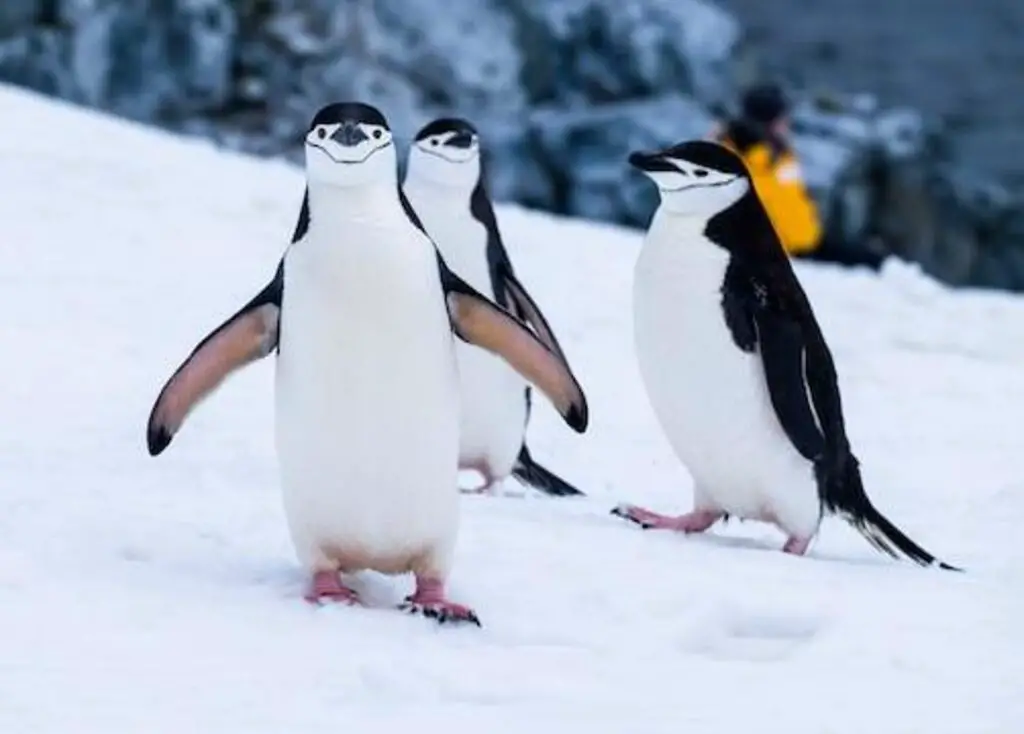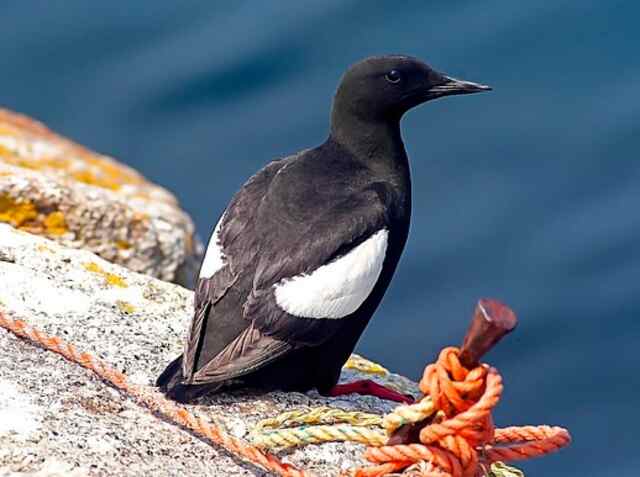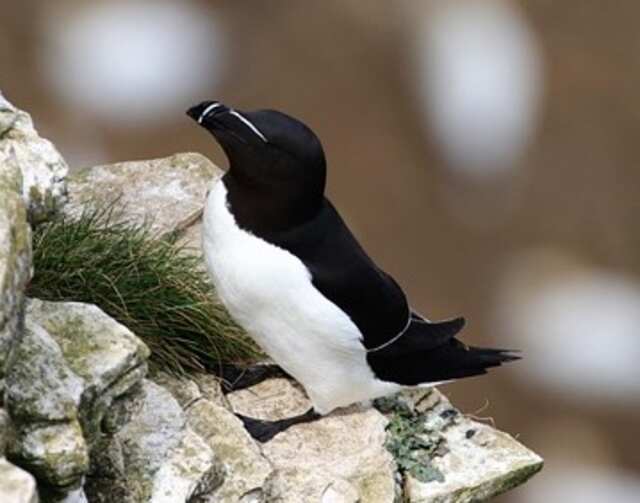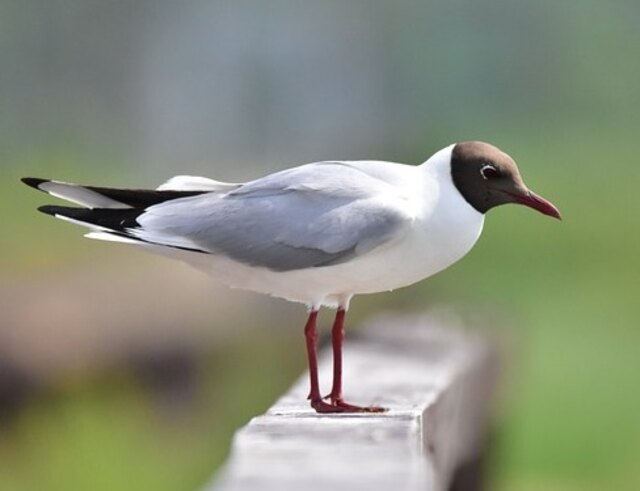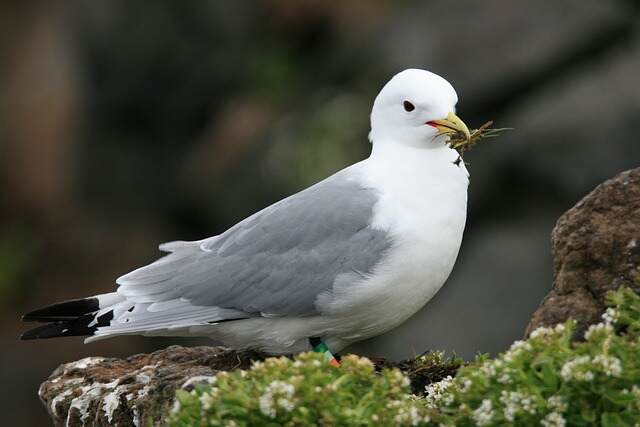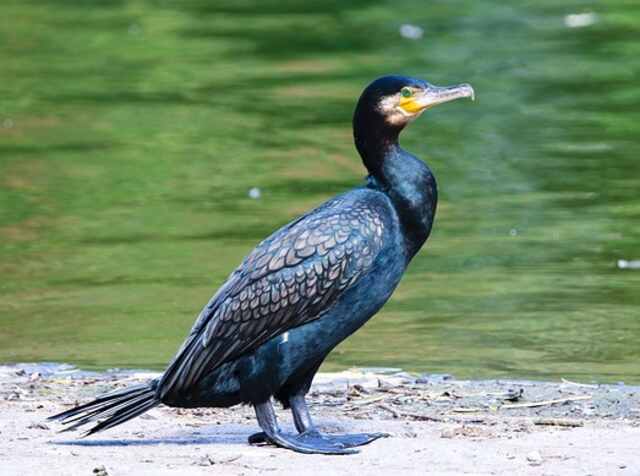Birds that look like penguins – it’s a weird and wonderful world out there! Have you ever seen a bird that made you do a double-take, thinking it was a penguin? It’s not just your eyes playing tricks on you – there are actually several species of birds that have evolved to look remarkably like the iconic black-and-white tuxedo-wearing birds of the Southern Hemisphere.
But why do they do it? Is it just a case of mistaken identity, or is there something more at play? Let’s dive in and explore the fascinating world of birds that look like penguins!
Table of Contents
Chinstrap Penguin (Overview)
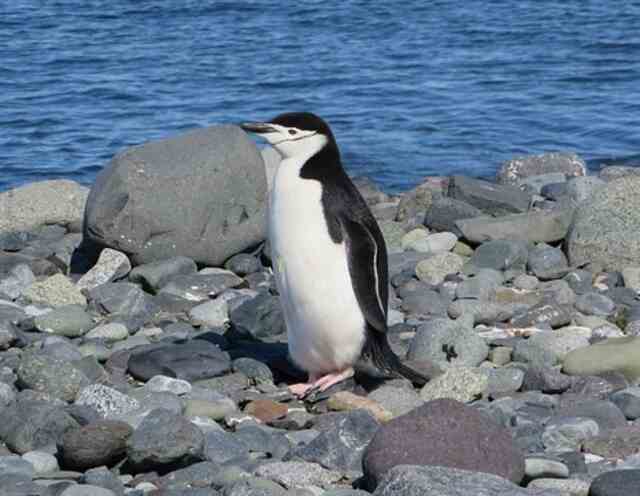
Chinstrap Penguins are the most abundant penguins with 8,000,000 pairs, and one of the smallest penguin species, measuring only 26 to 30 inches in length and weighing 7 to 10 pounds.
They are easily recognizable by the narrow black band that wraps under their chin, giving them a distinctive “chinstrap” appearance. These penguins can be found along the coast of Antarctica and on several sub-Antarctic islands.
Range and Habitat of Chinstrap Penguins
Chinstrap Penguins are found exclusively in the Southern Hemisphere, breeding in colonies across Antarctica and the sub-Antarctic islands. Their preferred breeding habitats are rocky slopes and ice-free areas near the coast, providing easy access to the ocean for foraging.
These adaptable birds are able to nest on steep and rocky terrain, sometimes even on cliffs or among boulders. During the non-breeding season, Chinstrap Penguins migrate further north into the Antarctic Peninsula and South Georgia, where they can be found in large numbers on rocky beaches and coastal areas.
Despite the harsh and unpredictable conditions of their natural habitats, Chinstrap Penguins have evolved to thrive in these extreme environments, showcasing their remarkable adaptability and resilience.
Diet of Chinstrap Penguins
Chinstrap Penguins have a diverse and unique diet that is primarily comprised of krill, squid, and fish. They are known to consume up to 2 pounds of food per day during the breeding season, which is critical for maintaining their body weight and energy levels.
Krill is the most important food source for these penguins, as it provides the necessary protein and lipid content needed for growth and survival. They are also known to supplement their diet with small fish, such as lanternfish, and squid when available.
Interestingly, Chinstrap Penguins are known to feed in deep waters, diving as deep as 200 feet to catch their prey. Their diet is a vital component of their survival and reproductive success in their harsh Antarctic environment.
Appearance and Color of Chinstrap Penguins
In addition to their distinctive black and white markings, Chinstrap Penguins have pink bill, and fleshy black feet and bills. They also have a unique feather structure that helps them to stay warm in cold temperatures.
Habits and Behaviors of Chinstrap Penguins
These penguins are known for their vocalizations, often sounding like a chorus of trumpets. They are also strong swimmers and divers, capable of diving to depths of up to 230 feet in search of food. During breeding season, Chinstrap Penguins form large colonies and build nests out of pebbles and other materials.
Overall, Chinstrap Penguins are a fascinating species of penguin with unique adaptations and behaviors that allow them to thrive in their harsh and icy habitats.
Birds that Look Like Penguins
Atlantic Puffin
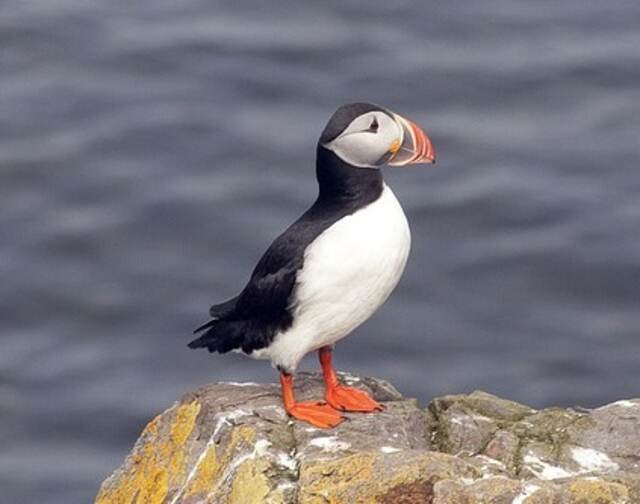
The Atlantic Puffin is a charming bird with a brightly colored beak that sets it apart from other seabirds. These birds can be found in the North Atlantic, from Newfoundland to Norway, and they breed on rocky cliffs and offshore islands. Puffins are adapted for diving and can swim up to 200 feet underwater to catch their favorite food, small fish.
During breeding season, they develop unique breeding plumage, which includes a colorful beak and striking eye markings.While the Puffin and Penguin share some similarities, there are many differences between these two birds. Unlike Penguins, Puffins have wings and can fly. Additionally, Puffins live in a much wider range of habitats, from the Arctic tundra to the open ocean.
While Penguins have adapted to a primarily fish-based diet, Puffins eat a variety of small marine creatures, such as shrimp, squid, and small fish. Finally, Puffins are significantly smaller than Penguins, with an average weight of just 10 ounces, and they have distinctive colorful beaks that Penguins lack.
Common Guillemots
Guillemots are seabirds found throughout the Northern Hemisphere. These small to medium-sized birds are known for their distinctive black and white plumage, long pointed bills, and red feet. They typically breed in large colonies on cliffs and rocky outcroppings, and feed on small fish and invertebrates.
Guillemots are known for their excellent diving abilities, often reaching depths of over 100 meters in search of food. While Guillemots share many physical characteristics with penguins, such as their black and white coloring and streamlined bodies, there are several notable differences. Unlike penguins, Guillemots are able to fly and are not restricted to living solely in aquatic habitats.
Additionally, Guillemots have longer bills and are smaller in size compared to most penguins. Their diets also differ, with Guillemots primarily feeding on small fish and invertebrates, while penguins primarily feed on krill and other small crustaceans.
Razorbills
Razorbills are striking black and white seabirds known for their distinctive, pointed black bills that contrast with their white faces and breasts. They can be found in the North Atlantic and Arctic oceans, breeding on coastal cliffs and rocky islands. Their diet consists mainly of small fish, which they catch by diving underwater with their wings folded tightly against their bodies. These birds are highly social and often breed in large colonies, with pairs forming strong bonds during the breeding season.
Although Razorbills share a similar black and white coloration and similar diving behavior with penguins, they are not closely related. Unlike penguins, Razorbills can fly and have a more pointed beak. They also inhabit different regions, with Razorbills primarily found in the North Atlantic and Arctic oceans while penguins inhabit the southern hemisphere.
Additionally, their diets differ as Razorbills primarily feed on fish while penguins feed on krill and other small marine animals. Despite these differences, both Razorbills and penguins are well adapted to life in the ocean and have evolved similar behaviors to survive in their respective habitats.
Common Murres
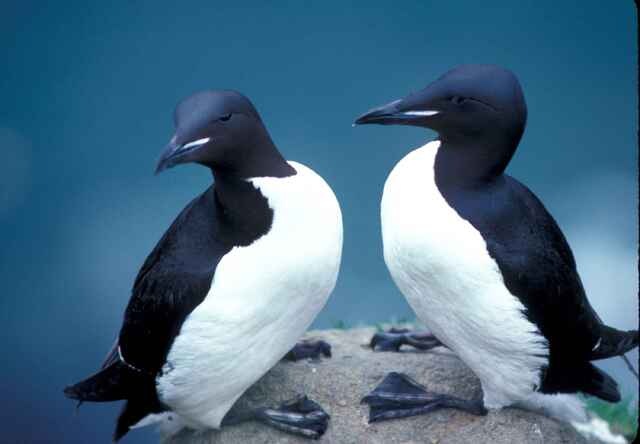
The Common Murres are a group of seabirds found in the Northern Hemisphere, typically nesting on steep cliffs overlooking the sea. They have distinctive black and white plumage, with long, pointed bills adapted for catching small fish and krill. These birds are excellent divers, with the ability to reach depths of up to 100 meters. Their range extends from the Arctic regions of Alaska and Canada to the coasts of Scandinavia and Russia.
Murres are a vital part of the ocean ecosystem, playing an essential role in maintaining the balance of marine life. While often confused with penguins due to their similar black and white coloring and diving abilities, there are several key differences between the two. Unlike penguins, Murres can fly, and they have longer, more pointed bills. Murres also have a more extensive range, inhabiting both the Pacific and Atlantic Oceans.
Additionally, their diets consist mainly of small fish and krill, whereas penguins primarily consume fish and squid. Despite these differences, both Murres and Penguins are fascinating and important species that contribute to the diversity and beauty of our planet’s wildlife.
Auklets
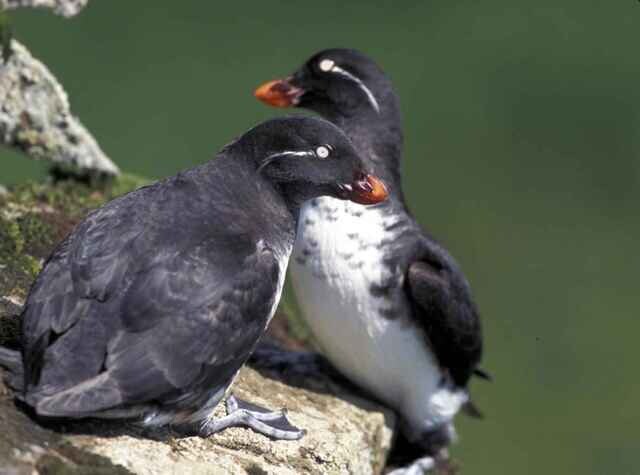
Auklets are fascinating seabirds known for their unique appearance and quirky behaviors. These small, chunky birds are characterized by their short, thick necks, brightly colored bills, and tufted plumes that they display during courtship. Auklets are found in the cold waters of the North Pacific, ranging from Alaska to Japan. They prefer to nest on rocky islands and cliffs, where they excavate burrows in the soil to lay their eggs.
Auklets feed primarily on small fish, krill, and zooplankton, diving up to 50 meters deep to catch their prey. While Auklets share many similarities with penguins, they are not actually closely related. Auklets are part of the Alcidae family, while penguins belong to the Spheniscidae family. Both birds share a similar range, as they are found in cold waters near the poles. However, Auklets are found in the North Pacific, while penguins are found in the Southern Hemisphere.
Auklets also differ from penguins in their habitat preferences, as they nest on land rather than on ice. In terms of diet, Auklets primarily feed on fish and krill, while penguins primarily feed on krill and squid. Additionally, Auklets are much smaller than penguins and have a different appearance and coloration. While they share some similarities, Auklets are truly unique birds in their own right.
Inca Terns
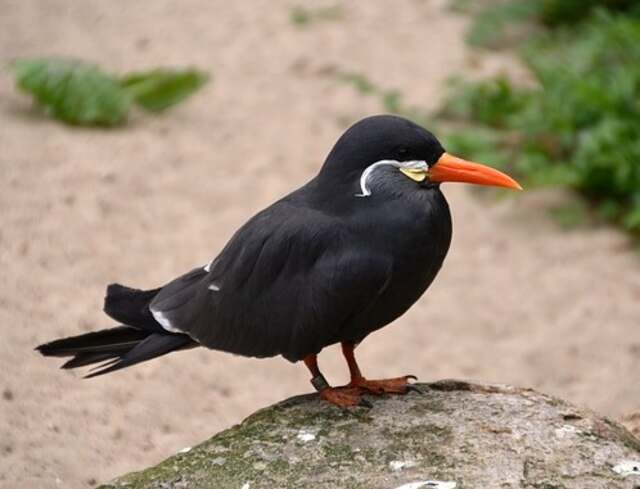
As graceful and agile seabirds, Terns are known for their unique features, including their sharp wings and slender bodies. They can be found in various locations, from coastal areas to open waters and are known for their expert hunting skills, swooping and diving to catch fish. These birds typically breed in colonies on islands or rocky shorelines and their diet consists mainly of small fish and invertebrates.
Their unmistakable “kee-wik” call can be heard echoing across the shorelines where they reside. While often mistaken for penguins due to their black-and-white coloring, Terns and Penguins have many differences in their appearance, habitat, diet, and behavior. Unlike penguins, Terns are found in various habitats worldwide, from the Arctic to the tropics, and feed on a diet of fish and invertebrates.
Terns are smaller in size, with a slender body and sharp wings, while penguins have a more robust build and are adapted for life in cold waters. Additionally, Terns are known for their aerial hunting and nesting habits, while penguins are flightless and rely on their powerful swimming abilities.
Black Headed Gulls
Gulls are a highly adaptable family of seabirds found worldwide, known for their piercing calls and scavenging habits. They come in a variety of sizes and colors, with some species sporting striking black and white markings. They can be found along coastlines, lakes, and rivers, as well as in urban areas where they scavenge for food. Gulls are omnivorous, feeding on everything from fish and insects to garbage and carrion.
Some species, like the Herring Gull, are known for their aggressive behavior and have been known to steal food from other birds. Despite their similar black and white coloring, Gulls and Penguins have distinct differences in appearance, habitat, and behavior. Unlike Penguins, Gulls are not exclusively found in cold regions and can be found in a variety of habitats, from Arctic tundra to tropical beaches.
They also have a wider diet range and are opportunistic scavengers. While Penguins are flightless, Gulls have the ability to fly long distances, using their wings to effortlessly soar above the ocean. Additionally, while Penguins are known for their social behavior and communal nesting habits, Gulls are more solitary in nature and generally nest alone.
Shearwaters
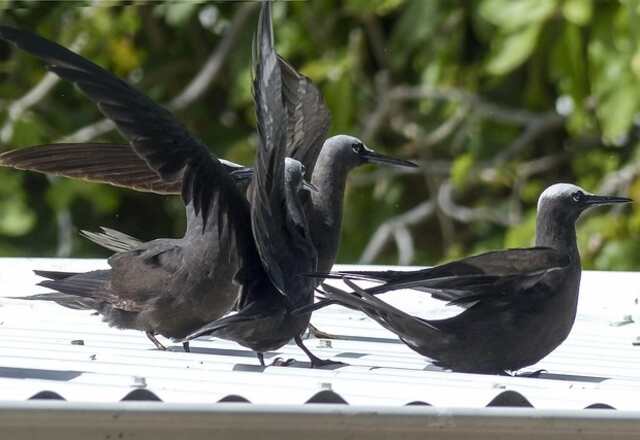
As an avid bird enthusiast, I can attest to the magnificence of the Shearwaters. These birds are known for their streamlined bodies, long wings, and pointed bills, which are perfectly adapted for diving into the ocean to catch fish. Shearwaters are found in oceans all around the world, with some species even traveling over 20,000 miles during their annual migrations. They typically nest in burrows or crevices on islands, and feed on small fish, squid, and crustaceans.
While the Shearwater may share some physical similarities with the Penguin, there are many differences between the two species. For starters, Penguins are flightless, while Shearwaters are expert fliers. Penguins are also limited to colder regions like Antarctica, while Shearwaters can be found in warmer waters as well. In terms of diet, Penguins primarily eat krill and fish, while Shearwaters feed on a wider range of ocean creatures.
Additionally, Penguins have distinctive black and white coloring, while Shearwaters come in a variety of colors and patterns. Despite these differences, both species are well adapted to their oceanic habitats and have fascinating behaviors and habits that make them a joy to observe in the wild.
Cape Petrel
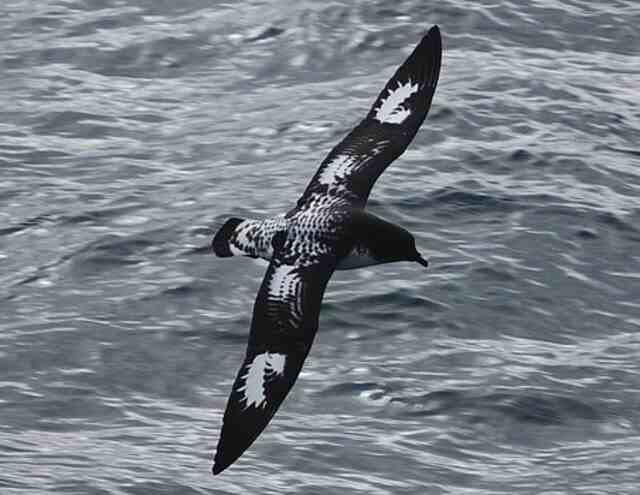
Petrels are fascinating seabirds with distinctive physical features such as their tube-like nostrils, webbed feet, and strong wings. They are found across the world’s oceans, from the Arctic to the Antarctic, and are known for their long-distance migrations. Petrels feed on fish, squid, and crustaceans and are essential indicators of the health of marine ecosystems. These birds are a vital part of the ocean’s food web, and their survival is crucial to the balance of our planet’s natural systems.
While Petrels and Penguins share some similarities in their range, habitat, and diet, they also have many differences. Unlike Penguins, Petrels have webbed feet and wings, and they can fly long distances. Petrels are smaller in size than Penguins, and they come in a variety of colors, from black and white to gray and brown.
Petrels are found in both cold and warm water environments, whereas Penguins are mostly found in the Southern Hemisphere. Although they have different physical appearances, Petrels and Penguins share the same marine ecosystem and are essential indicators of the health of our oceans.
Fulmars
Fulmars are a fascinating seabird species found across the North Atlantic and Arctic oceans. They have a distinct appearance, with their white plumage, gray wings, and yellow bill, and are known for their impressive soaring abilities. These birds feed primarily on fish, squid, and krill, and are able to drink salt water thanks to their unique salt gland. They nest on rocky cliffs and lay a single egg each breeding season.
While Fulmars and Penguins share some similarities in their appearance, habitat, and diet, there are also notable differences. Unlike Penguins, Fulmars have wings and can fly, and are found in a much wider range of habitats, including open ocean, cliffs, and tundra.
They also have a different diet, consisting mainly of fish and krill instead of the crustaceans and fish that Penguins eat. Additionally, Fulmars are larger and have a different coloration, with white plumage and gray wings, compared to the black-and-white coloration of most Penguin species.
Cormorants
Cormorants are fascinating birds with a unique appearance and behavior. With their sleek, dark feathers and long necks, these birds are built for diving and swimming. They can be found in coastal areas and inland waters throughout the world, and are known for their voracious appetites, feeding on a variety of fish and other aquatic creatures.
Cormorants are social birds, often seen in large flocks, and their breeding habits vary depending on the species. While Cormorants may bear some resemblance to Penguins, they have many distinct differences. Unlike Penguins, Cormorants are able to fly, and their habitat ranges from coastal areas to freshwater lakes and rivers.
They also have a wider diet, feeding on fish, eels, and other aquatic animals. Additionally, Cormorants tend to be larger and have a more pronounced hooked beak. However, both birds share a love for swimming and diving, and are equally fascinating to observe in their natural habitats.
Pelicans
Pelicans are magnificent birds with unique features such as their oversized bill and impressive wingspan. Found across the globe, they can be seen near both freshwater and saltwater habitats. Their diet primarily consists of fish, which they catch by diving from great heights into the water. Pelicans are social creatures that often gather in large flocks, making for a mesmerizing sight.
Despite their similar appearance, Pelicans and Penguins have many differences. Unlike Penguins, Pelicans have the ability to fly, and are found in a wider range of habitats, including both warm and cold climates. Pelicans have a diverse diet that includes fish, while Penguins mostly feed on krill and other small creatures.
While both species have striking black and white plumage, Pelicans have a more colorful beak and a unique flap of skin beneath their bill. Nevertheless, both birds are fascinating creatures that capture the attention of bird enthusiasts around the world.
Boobies
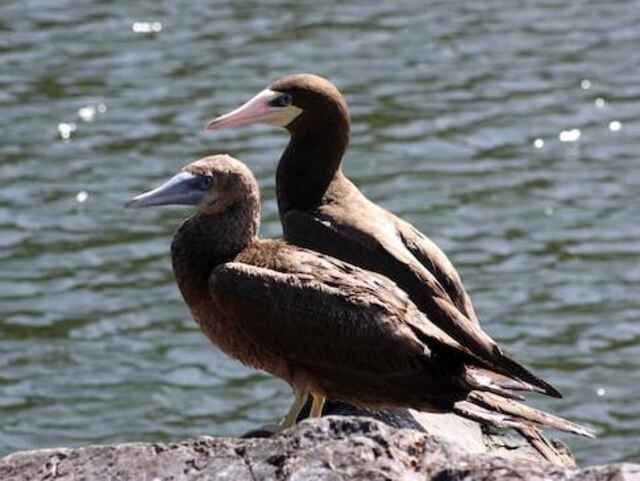
Boobies are fascinating seabirds that belong to the Sulidae family. They have a stocky body, long pointed wings, and a large head with bright blue feet. Boobies are found in tropical and subtropical oceans, ranging from the Galapagos to the Gulf of Mexico. They typically inhabit islands and are known for their ability to dive deep into the water in search of prey, such as small fish and squid.
Boobies also have a unique courtship display that involves dancing and honking, making them a favorite among birdwatchers. While Boobies may share some similarities with Penguins, they are a completely different species. Unlike Penguins, Boobies have wings and are able to fly. They are also found in warmer waters, rather than the cold climates that Penguins inhabit.
Boobies have a more diverse diet, feeding on fish and squid, while Penguins mainly eat fish. Boobies are typically larger than Penguins, and they have different appearances, with bright blue feet and a stocky body, compared to the sleek and streamlined form of the Penguin. Despite their differences, both species are incredible adaptations to their respective environments, and are a joy to observe in the wild.
How to Identify Birds That Look Like Penguins
Are you ready to sharpen your birdwatching skills and identify some amazing penguin lookalikes? Here are some tips for distinguishing these birds from their iconic counterparts:
- Look for the distinctive black and white coloration: While many penguin-like birds have a similar black and white coloration, pay attention to the specific pattern. For example, the black-and-white king eider has a different pattern on its head than a penguin. Pay attention to the bird’s size and shape: Birds that look like penguins may have a similar body shape, but they are usually smaller and more slender than actual penguins. The thick-billed murre, for example, is about half the size of an emperor penguin.
- Check the bird’s habitat: Actual penguins are found only in the Southern Hemisphere, so if you’re in the Northern Hemisphere, chances are you’re looking at a bird that resembles a penguin rather than an actual penguin.
- Listen to the bird’s call: Birds that look like penguins often have distinct vocalizations that differ from actual penguins. The crested auklet, for example, makes a distinctive rattling call that sounds nothing like a penguin’s braying call.
Remember, while these birds may look like penguins, they have their own unique features and behaviors that set them apart. So keep an eye out for these distinctive traits, and enjoy the wonder of these fascinating creatures in the wild! With these tips, you’ll be a pro at identifying birds that look like penguins in no time.
Fun Facts About Penguins and Their Lookalikes
Penguins may be a beloved and iconic species, but did you know that other birds can mimic their distinctive appearance as well? Here are some fascinating fun facts about penguins and their lookalike birds that are sure to pique your interest:
- Puffins, guillemots, razorbills, murres, and auklets are all members of the same family as penguins, called the Alcidae family.
- Terns, gulls, shearwaters, petrels, and fulmars are all seabirds that are often found in the same habitats as penguins.
- Cormorants are diving birds like penguins and also have a similar black and white coloration.
- Pelicans and boobies may not look like penguins, but they are also expert divers and can swim underwater to catch fish just like their black and white counterparts.
- Puffins are sometimes called the “sea parrot” because of their colorful beak and resemblance to the bird.
- Guillemots, razorbills, and murres all have a similar body shape to penguins, with a streamlined body for swimming and diving.
- Auklets have distinctive head plumes that can be raised in display, similar to the crests of some penguin species.
- Terns and gulls are often seen feeding on the same fish as penguins and are important indicators of the health of marine ecosystems.
- Shearwaters and petrels are known for their long-distance migrations, with some species traveling over 40,000 miles in a year.
- Fulmars have a unique defense mechanism where they projectile vomit a foul-smelling oil at potential predators.
- Cormorants and pelicans have a similar “waddle” on land to penguins and are often seen standing on rocks or piers.
These fun facts and unique behaviors of penguins and their lookalike birds are a testament to the incredible diversity of bird species around the world. Whether you’re a bird enthusiast or just appreciate the natural world, there’s always something new and fascinating to discover!
Why Do Birds Mimic Penguins?
For starters, penguins have a distinctive black and white coloration that helps them blend in with their surroundings. This coloration is known as “countershading,” and it helps them avoid detection by predators such as sea lions and orcas. By mimicking the appearance of penguins, other birds can also avoid detection and increase their chances of survival.
Additionally, penguins are highly adapted to life in the water. They have streamlined bodies and powerful flippers that allow them to swim and dive with ease. By mimicking this body shape, other birds can also become more efficient swimmers, which can be a huge advantage in aquatic habitats.
But it’s not just about survival. Birds that mimic penguins may also do so for mating purposes. Some penguin species have elaborate courtship displays, such as the Adélie penguin’s “ecstatic display,” which involves flapping their flippers and making a series of braying calls. By mimicking these displays, other birds can attract mates and increase their chances of passing on their genes.
Overall, birds that mimic penguins are fascinating examples of evolutionary adaptation. Whether it’s for survival or mating, these birds have found a way to thrive in their respective habitats by emulating the iconic black and white birds of the Southern Hemisphere.
Conclusion
As we’ve seen, these birds that resemble penguins are far from being mere imitators. They have adapted unique traits that allow them to thrive in their distinct habitats and lifestyles. From the diving prowess of the auk to the impressive aerial displays of terns and gulls, and the striking bills of puffins and razorbills, each bird offers something special.
While it’s natural to be drawn to their likeness to penguins, it’s important to recognize and appreciate their individuality and contributions to the biodiversity of our world. By delving deeper into their fascinating characteristics and connections to penguins, we can broaden our understanding and admiration of the natural world.
The next time you go birdwatching, make sure to look out for these penguin-like birds and see if you can spot them in their natural habitats. Whether you’re exploring the coast or trekking across a remote island, you never know what incredible creatures you might encounter.
And if you’re eager to learn more about these captivating birds, be sure to check out the additional resources available to deepen your knowledge and appreciation.
- Want to discover more about the enchanting world of penguin-like birds? Look no further than this comprehensive birding guide, National Geographic Field Guide to the Birds of North America. This guide is jam-packed with useful tips on identifying and observing these remarkable creatures in their natural habitat.
- Show your support for the conservation efforts of these birds by making a donation to a reputable conservation organization, like the National Audubon Society or the World Wildlife Fund. Every contribution helps to protect these fascinating species and their habitats.
Thanks for reading, and happy birding! Remember to always respect the wildlife and their habitats.
Related Post:

